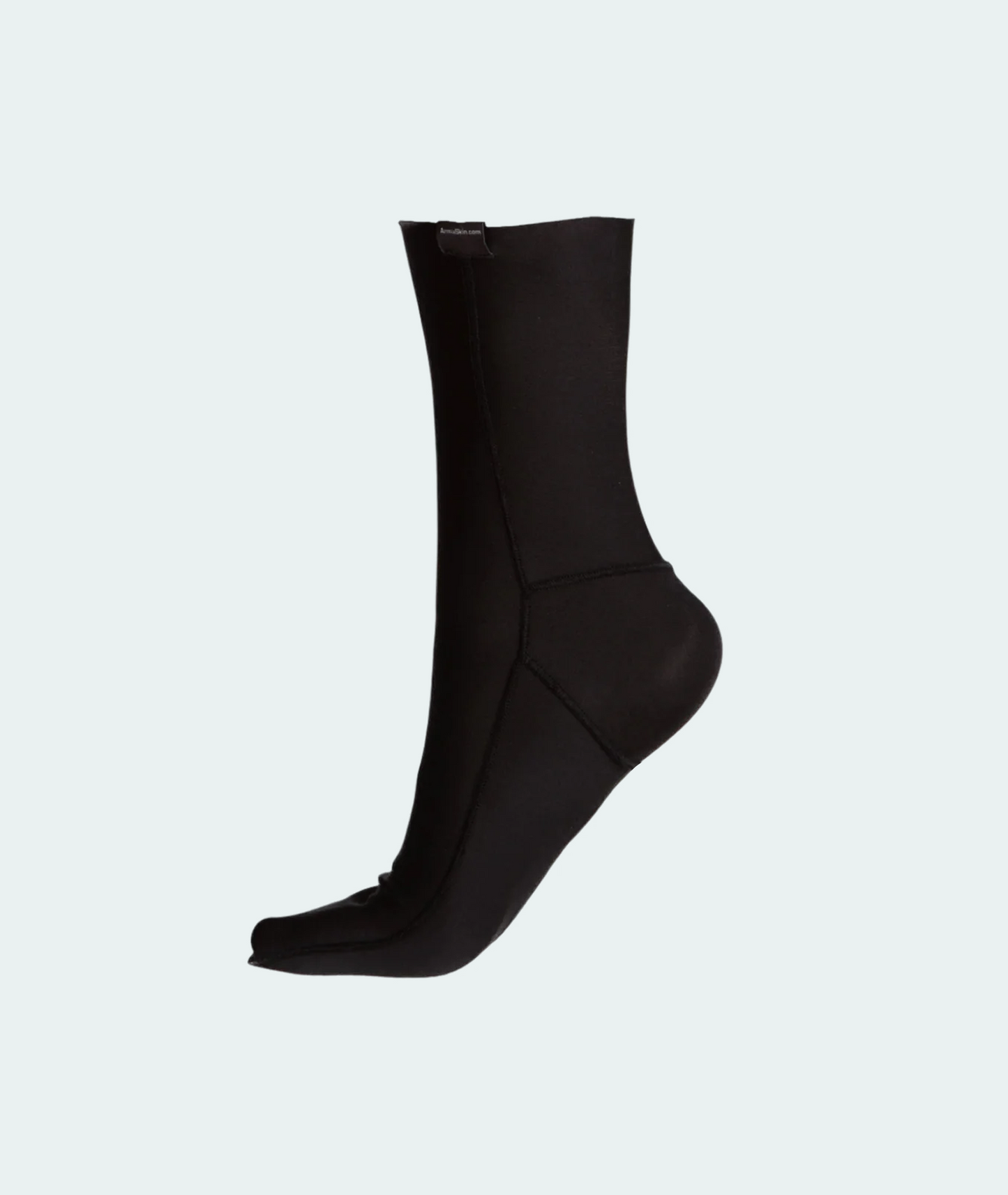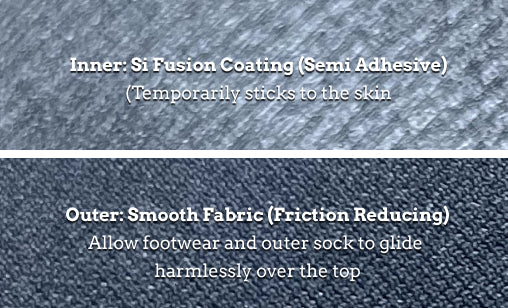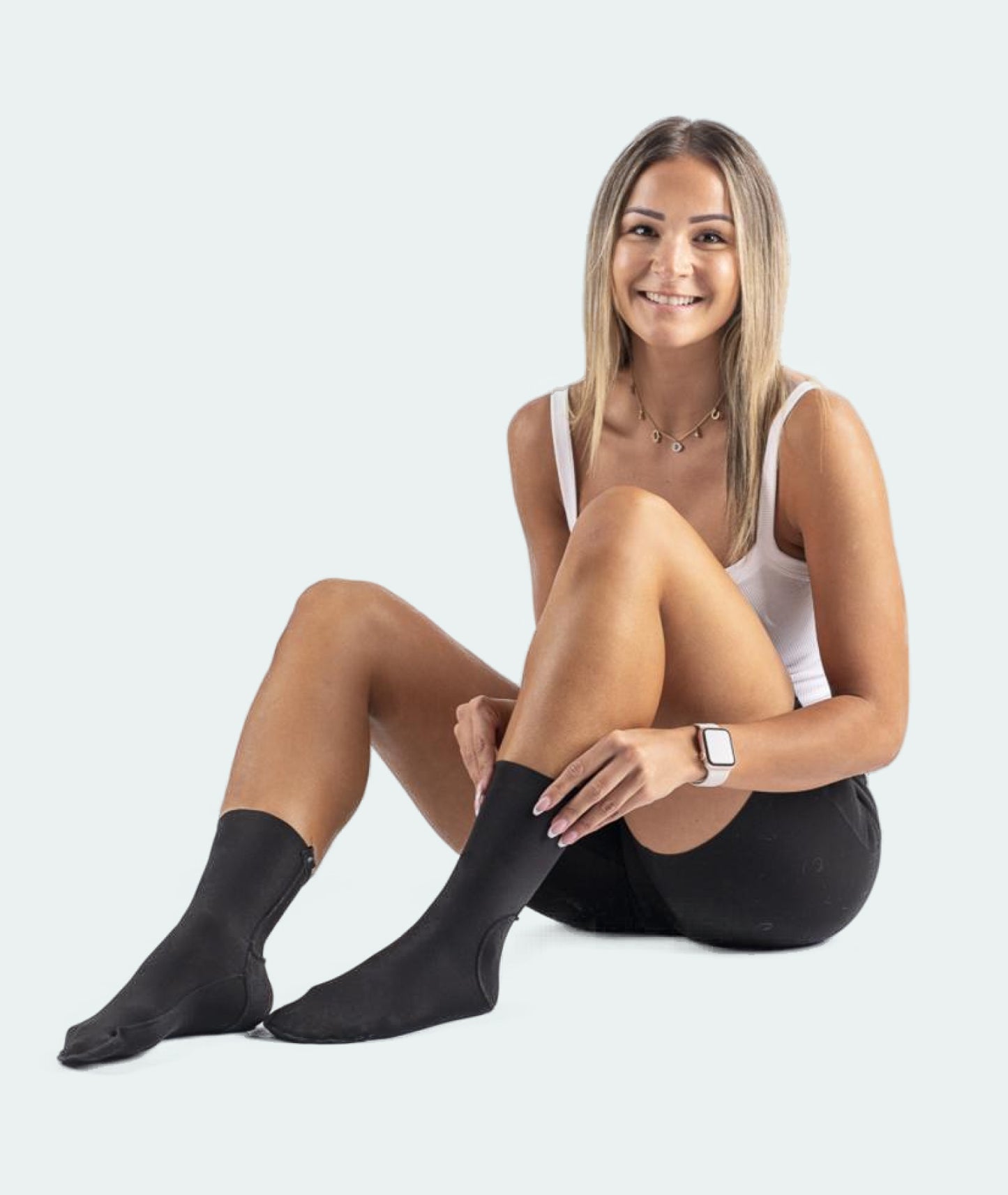Introduction
Embarking on a 3-day trek is a thrilling adventure that tests your endurance and resilience. Whether you’re traversing rugged mountains, exploring remote trails, or engaging in tactical deployments, ensuring you have the right water supply is as vital as your gear. In this guide, we’ll explore how much water you should pack for a 3-day hike, detailing essential hydration tips and logistical approaches that will help you stay safe, well-fuelled, and blister-free on the trail. Plus, we’ll discuss how top-tier gear—like our ArmaSkin anti-blister socks and blister prevention socks—plays a crucial role in mitigating discomfort, preventing injuries, and keeping you on your feet mile after mile.
Understanding Your Hydration Needs
Before you lace up your boots and hit the trail, it’s important to understand the factors that dictate your daily water requirements. Hydration is fundamental not only for maintaining energy levels and core body temperature but also for ensuring that your skin remains supple and your feet less prone to friction-induced blisters.
Factors That Influence Water Consumption
Several key elements influence just how much water you’ll need on a multi-day trek:
Temperature and Humidity: In hotter climates or during peak summer months, your body loses moisture faster, necessitating increased water intake.
Physical Exertion: The more strenuous the hike, the more you’ll sweat. High-intensity trekking or moving at a brisk pace can significantly increase your hydration requirements.
Altitude: Higher elevations can dehydrate your body quicker due to thinner air and increased respiratory water loss.
Personal Factors: Your body size, fitness level, and individual sweat rate all play into your overall water needs.
Experts generally recommend a baseline of 2 to 3 litres of water per day under moderate conditions. However, when factoring in high-intensity activities and variable weather, you might need to adjust this amount upward to 4 litres or more per day.
Assessing Your Hiking Route
Understanding the specifics of your trail can greatly influence your water packing decisions:
Availability of Water Sources: If your route includes reliable water sources such as streams or lakes, you may choose to carry less water initially and rely on purification methods along the way.
Duration Between Refill Opportunities: In more isolated areas, pack enough water to last until your next safe source is encountered, keeping safety margins in mind.
Terrain Complexity: Steep inclines and rugged terrain can increase sweat production, thus requiring additional hydration.
Efficient Water Packing Strategies
Knowing how much water you need is only part of the equation. Equally important is how you carry and manage that water over several days without compromising your mobility or comfort.
Choosing the Right Containers
Selecting the optimal water carriers is crucial for balancing hydration with practicality:
Hydration Bladders: These are excellent for easy access while on the move. They distribute weight evenly across your back and are ideal for continuous sipping.
Insulated Water Bottles: These help to maintain water temperature, keeping your water cool in hot weather and preventing freezing in colder climates.
Don’t Let Blisters Slow You Down!
Discover the ultimate solution with ArmaSkin Anti-Blister Socks. Designed with advanced friction-reducing technology, these socks keep your feet dry, comfortable, and blister-free – no matter the challenge.
Shop NowCollapsible Water Bottles: Lightweight and space-efficient, these bottles can be stowed away when empty, reducing unnecessary load.
Remember, every extra gram counts when you’re on a mission, whether it’s for recreational hiking or tactical deployments.
Water Purification and Safety
Even if your route includes natural water sources, knowing how to purify water is essential:
Filtration Systems: Portable water filters can remove bacteria and protozoa, ensuring your water is safe to drink.
Purification Tablets: These are lightweight and can be easily transported as a backup if your primary filtration system fails.
UV Purifiers: Small, pen-sized devices that use ultraviolet light are another effective method for making water safe at the trailhead.
Plan your purification methods in conjunction with the water you carry. Strategic planning means you can lighten your load without sacrificing safety.
Interplay Between Hydration and Blister Prevention
On multi-day treks, effective hydration and proper foot care go hand in hand. As you cover long distances, the combined exposure to water (both from the environment and sweat) and friction can lead to painful blisters.
The Role of Hydration in Injury Prevention
Staying well-hydrated helps maintain skin elasticity and circulation. Hydration plays a significant role in reducing friction:
Moisture Balance: Well-hydrated skin is more resilient to environmental stresses. Lack of hydration can cause your skin to dry out, potentially increasing the likelihood of friction burns and blisters.
Sweat Control: While sweating is a natural mechanism for cooling, excess moisture can create a breeding ground for chafing. This is where high-performance gear, such as ArmaSkin socks, becomes indispensable.
ArmaSkin Socks: Your Secret Weapon
Our range of anti-blister socks and blister prevention socks are engineered to complement your hydration strategy by ensuring your feet remain dry and comfortable. Here’s how:
Advanced Moisture-Wicking Technologies: These features draw sweat away from your skin, reducing the chance of blister formation.
Seamless, Ergonomic Design: ArmaSkin socks are designed to minimise friction points that can lead to blisters, even under heavy use.
Targeted Compression Zones: These support proper blood flow and reduce muscle fatigue—crucial for ultra-endurance events and tactical manoeuvres where every bit of energy counts.
For those planning long treks, pairing your water strategy with the best socks for preventing blisters is a recipe for success. Explore the range at ArmaSkin.com to find the perfect blend of comfort and protection.
Practical Tips for Water and Sock Management
Combining a robust water plan with the right footwear ensures comfort and performance from start to finish. Here are some actionable tips to integrate these elements seamlessly:
Pre-Hike Preparation
Planning: Map out your trail and identify water refill points. Calculate your water needs while factoring in potential delays or detours.
Gear Check: Before departure, inspect your hydration system and ensure your ArmaSkin socks or anti-blister liners are free from wear and fitted properly.
Packing: Distribute water weight evenly in your pack to prevent unnecessary strain and maintain balance on uneven terrain.
During the Hike
Regular Hydration: Set a schedule for drinking water, taking small sips regularly rather than waiting until you’re parched.
Sock Rotation: If conditions are particularly wet or if you’re sweating heavily, consider changing your hiking socks mid-trek if possible. Dry, clean blister prevention socks can save you from painful friction injuries.
On-the-Go Adjustments: Be ready to adjust your water consumption based on real-time weather changes and how you feel physically. Dehydration can sneak up quickly, especially as fatigue sets in.
Post-Hike Care
Rehydration: After completing your trek, replenish lost fluids with water and electrolyte drinks. Proper hydration speeds up recovery.
Sock Care: Wash your ArmaSkin socks following manufacturer recommendations. Clean, well-maintained socks are more effective at preventing blisters than worn-out ones.
Reflection: Assess your water and sock management strategy and make notes on areas for improvement for future hikes.
Advanced Hydration Techniques for Ultra-Endurance Adventures
For those who push the boundaries with ultra-endurance events or obstacle races, preparation extends beyond the basics of water packing. Consider these advanced strategies:
Hydration Packs with Integrated Cooling Systems: In extreme temperatures, choose systems that keep your water cool, encouraging continuous sipping and reducing the risk of heat exhaustion.
Electrolyte Supplementation: As you sweat, you don’t just lose water; you lose essential salts. Incorporate electrolyte tablets or powdered supplements into your water reserves.
Scheduled Hydration Reminders: High-tech hydration systems now offer apps or built-in timers to remind you to drink at regular intervals—an invaluable tool when you are caught up in the intensity of multi-day trekking.
Pairing these advanced hydration techniques with reliable anti-blister liners and ArmaSkin socks ensures you’re not only fueling your body effectively but also guarding against the all-too-common and painful blisters that can derail your journey.
Real-World Insights and Experiences
Many experienced hikers agree that the secret to long, successful treks lies in meticulous preparation and the synergy of all your gear—hydration systems, water purification, and especially the right socks. Consider the following real-life scenario:
Imagine setting out on a 3-day hike through challenging, arid landscapes. The sun is relentless, your water supplies are precious, and every step must count. By carefully calculating your water needs, using smart storage solutions, and relying on high-performance ArmaSkin socks, you maintain both your hydration and foot health. The result? A remarkable journey free from the debilitating discomfort of blisters that can slow you down and even end your trek early.
This holistic approach is crucial whether you’re navigating remote wilderness, participating in adrenaline-fueled obstacle races, or engaging in rigorous tactical deployments. The right balance of hydration and foot protection can be the difference between an invigorating adventure and a painful, stoppage-inducing ordeal.
Essential Checklist for Your 3-Day Hike
Before heading out on your multi-day trek, use the following checklist to ensure you’re prepared:
Determine Water Needs: Calculate water requirements per day based on temperature, exertion, and route difficulty.
Choose Your Containers: Pack a combination of hydration bladders, insulated water bottles, and collapsible containers.
Plan Purification: Bring portable filtration systems, purification tablets, or UV purifiers.
Prepare Your Footwear: Ensure your ArmaSkin anti-blister socks or blister prevention socks are in optimal condition.
Pack Light but Wise: Distribute the weight evenly to maintain balance and avoid unnecessary strain.
Emergency Supplies: Include a small reserve of extra water and electrolyte supplements for unexpected delays.
This checklist not only helps ensure your water needs are met but also aligns with your overall strategy to prevent blisters and maintain peak performance throughout your multi-day trek.
Conclusion
A successful 3-day hike is built on robust planning, precise hydration management, and the integration of high-performance gear. Understanding how much water to pack involves analysing your trail’s characteristics, evaluating environmental factors, and planning for on-the-go adjustments. Coupling this with the best socks for preventing blisters—such as the ArmaSkin socks and blister prevention socks—ensures your feet remain comfortable and blister-free, allowing you to focus on enjoying the adventure.
So, as you plan your next multi-day trek, ask yourself:
Have I calculated my water needs accurately?
Am I equipped with efficient water storage and purification systems?
Is my foot care routine in place with top-quality anti-blister liners and ArmaSkin socks?
Taking the time to prepare properly will pay dividends on the trail. Whether you’re an ultra-endurance athlete, a dedicated hiker, or part of a tactical team, hydration and foot protection are non-negotiable essentials in your gear arsenal.
Ready to elevate your hiking experience? Explore the range of ArmaSkin anti-blister socks and blister prevention socks designed to keep you moving forward comfortably. Prevent blisters today – Shop now at ArmaSkin and gear up for your next adventure!
By merging smart hydration strategies with cutting-edge sock technology, you invest in a journey where every step is secure, every sip is refreshing, and every mile is blister-free. Happy trekking!














